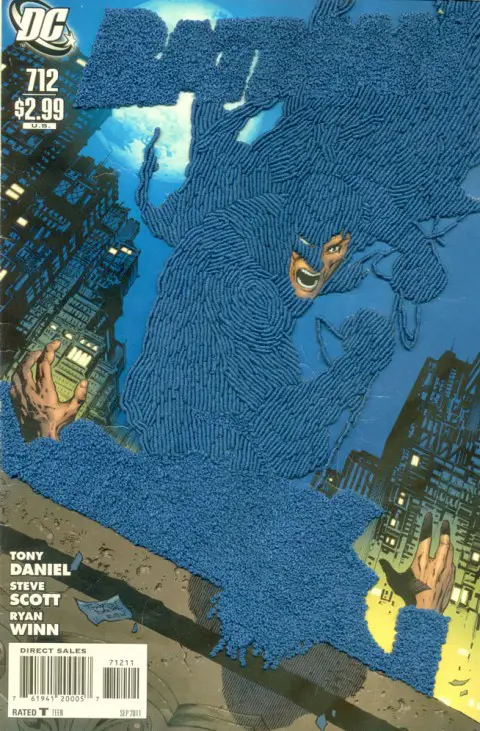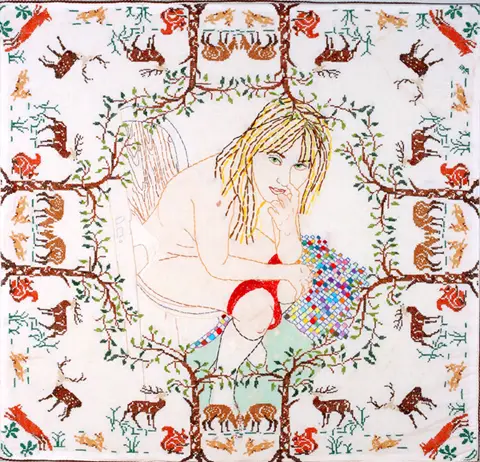Welcome to eMbroidery, a series of interviews with male embroiderers. This month, Mark Newport.
Name: Mark Newport
Location: Keego Harbor, MI, United States (near Detroit, MI).
How did you come to be an embroiderer? When I was a child my Grandmother taught me to sew and knit and in art school I studied in the Fiber Department learning to weave, and dye fabrics and other textile media. Since then I have always used textile processes and media in my work. In 1997 I started using embroidery to transform comic book covers and pages.
What does it mean to you? I use embroidery as a reference to traditional gender roles where many people think of embroidery and other textile work as something women do. So when I use it on a comic book image of a superhero it makes for a contradiction and raises questions about why we believe certain things are masculine or feminine. I also use it because embroidery like many textile processes is repetitive and time consuming work that allows me to think about what I am doing. So it helps me develop new work.
Where do you like to work? In my studio.
How do people respond to you as a male embroiderer? People generally comment more on how I make the work – sewing on paper than the actual process. With my knit work I get more reaction because I also knit when I travel, so people ask questions about it that suggest they are surprised to see a man knit.
Who inspires you? Other artists: Anne Wilson, Jane Lackey, Joan Livingstone, Louise Bourgeois, Tim Hawkinson, Outsider and Folk Art.
How or where did you learn you learn how to stitch or sew? I learned some sewing and needlework from my Grandmother when I was a child. Some I learned in art school at the Kansas City Art Institute and most in graduate school at the School of the Art Institute of Chicago.
Are your current images new ones or have you used them before? They are new.
How has your life shaped or influenced your work? I grew up in the 1970s, my parents were divorced when I was eight and I lived with my Mom until I went to college. As I mentioned, her Mom encouraged my interest in art making in all forms and taught me to sew and knit. So I was primed by the time and my family to choose the kind of work I do and to explore the ideas I am interested in.
What are or were some of the strongest currents from your influences you had to absorb before you understood your own work? This is a hard question to answer because the work is part of the process of understanding what I was taught. So I have come to understand many things my influences taught me, but I am also still processing those ideas in new ways as the work develops and I age. So I am not sure that I have absorbed things yet, and still the works goes on.
Do formal concerns, such as perspective and art history, interest you? Formal concerns are somewhat important to me because the visual effect and presence of a piece helps to engage the viewer and get them to spend time with my work. Art history is important because it provides reference points for my work for other people to understand it.
What do your choice of images mean to you? To me the combination of the embroidery and knitting with the superhero imagery raises questions about how define masculinity and the idea of protection.
Do you have any secrets in your work you will tell us? No.
How do you hope history treats your work? I hope the work ends up in museums where people can consider the ideas in the work.
Where can we find you and your work? marknewportartist.com, the Greg Kucera Gallery in Seattle, Washington, the Lemberg Gallery in Ferndale, Michigan, museums in New York, Detroit, and in exhibitions mostly in the US and abroad.
—
eMbroidery was created with the support and wisdom of the magnificent Bascom Hogue.








